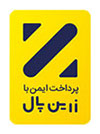I don’t remember teaching my elder daughter to read … because I never did. I do however remember when a carer at her nursery told me that my 5-year-old used to read Finnish story books to other children. They found that she loved reading aloud to others and was able to do it better than the carers – who were all bilingual but most of them had Swedish as mother tongue. In Finland children start school when they turn seven, so she had not yet had any formal tuition.
So how did this happen? The answer is in the picture – she was about two when she was given the alphabet puzzle and she absolutely adored it. She would hold up a letter and wait for me to say the sound before placing the piece in the puzzle. This way she little by little learnt all the sounds, and then she started recognising the letters in books I read to her. Next she noticed that she could decipher words by herself and this is how she started reading.
[It has to be said, that children who learn to read Finnish have it easier than most children in so far that all words in Finnish are pronounced as they are written (with a few minor exceptions). This makes the step from knowing the sounds of the individual letters to sounding a whole word much easier than in many other languages.]Of course, this is not a “method” that can be used in every, or even most languages, so why tell it? The reason I want to highlight the story is that there is not one right way to teach your child to read, the best method is the one that works for you and your child.
There are some aspects you do need to take into consideration when teaching your child to read and write at home. First of all, your child needs to be ready for this phase – the readiness shows as an interest in letters and text and wanting to write something, often the own name. It is important not to put pressure on your child to start before he or she is ready.
What you can do as a parent to nurture this interest is being a great role model for literacy. Read lots of books to (and later with) your child. Following the words with your finger while reading allows your child to make the connection between the sounds, letters and words. Write notes, cards and letters. If you have nothing else to write on a day, make writing the shopping list something that you do together.
Your role as a parent is also to be there to motivate, encourage and help your child discover the world of written text and to learn to master it. Make the experience more fun by providing different materials to aid the learning. If your child prefers colourful pens to start the writing, make sure there are plenty of these, along with a lot of paper available. Some children love white boards or others want to start with building blocks or puzzles, like my daughter. Have a lot of books in the home with bright interesting pictures and clear text.
Keep in mind that normally you would have to spend a fair amount of time with your child to teach him or her to read and write. If you think you may not be able to spare this time, ask if others – such as grandparents or other relatives – could be of help. Remember that your children can always become biliterate later in life: both of my daughters learnt to write Punjabi at school and during weekend classes once we came to England. After they moved away from home, emails and text messages became a great way to keep up the skill of writing Swedish.

 Persian
Persian  English
English  Arabic
Arabic 

